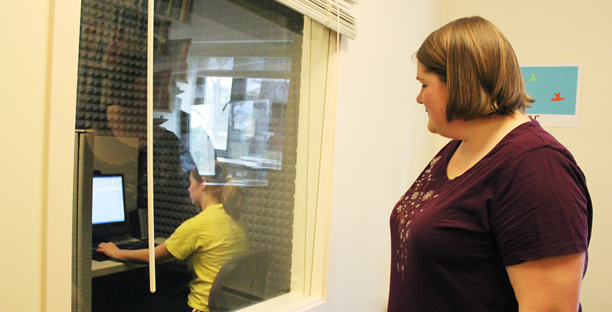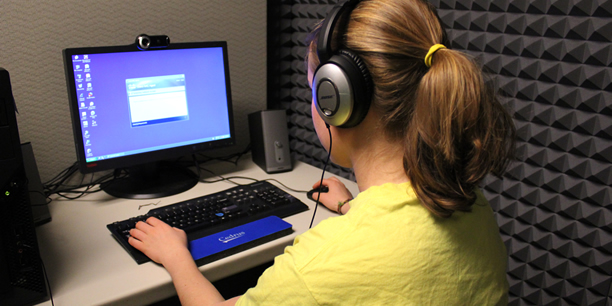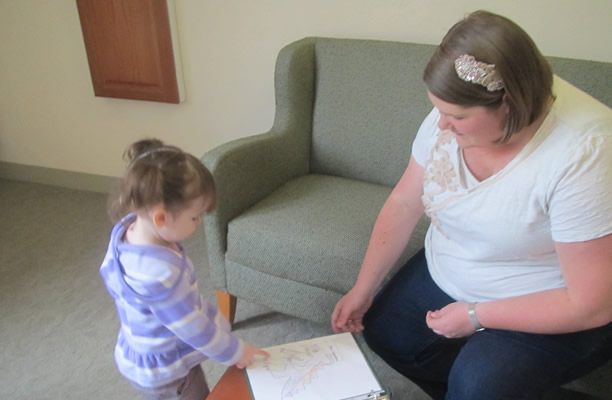Current Projects and Experiments
Children’s Acquisition of a Novel Language
Researchers have found that adults are better able to learn a stress rule that is found in natural languages than one that is very similar but not found in language. These findings suggest that language learning is aided by a language-specific mechanism in the brain. To date, there has been no similar research done with children to see if they use the same learning mechanisms as adults in these kinds of language-learning tasks. The Children’s Acquisition of a Novel Language study will help us to compare children’s learning of stress rules to that of adult learners, whose results were discovered in an earlier study done by this lab. The experiment will be in the form of learning a group of words where a child will hear made-up words and see the pictures that go with the words. Each child will then be tested on how s/he remembers the words and to what extent s/he is able to pick out other words that sound as if they follow the same pattern as the words already learned.
Previous Projects and Experiments
Natural and Unnatural Stress Patterns in Language
This experiment was an investigation to the question of accessibility to UG by comparing the acquisition of a natural stress system versus an unnatural one. Our previous research into this topic has provided support for the idea that learners are able to access a rare, but natural, UG principle in the acquisition of phonological stress. In this study, we extended this research finding by testing the principle that languages stress heavy syllables over light syllables.


Tickle the Puppy
This study examines how child phonology treats function words and lexical words in the same prosodic context. Recent research has shown that children’s omission of function words is governed at least in part by prosodic factors; object articles show different rates of deletion in different prosodic environments (Gerken 1996; see also Demuth 1997). One might hypothesize that prosody is the only factor in the deletion of unstressed syllables, that so long as the prosodic context is equivalent, differences in morphosyntactic structure will not affect deletion rates. The results show that children are sensitive to whether an unstressed syllable is a function word, or part of a lexical word, even when these syllables are in the same prosodic context. This study, unlike Gerken’s, looks at the behavior of individual children; it shows that some children omit the function word at a higher rate, while others omit the lexical syllable more often. Within Optimality Theory these patterns can be accounted for by different constraint ranking hierarchies, and, in fact, are even predicted to occur.
Beyond the Minimal Word
Our Beyond the Minimal Word study explores children’s acquisition of stress in multisyllabic monomorphemic words. Participants aged 2-3 from the Wellesley College Child Study Center were shown images of imaginary creatures and told their names, which were made-up words. The children then repeated the names. We are investigating whether the children’s reiterations of the multisyllabic monomorphemic words retained the stressed syllable in the word’s original position. This study was run in the spring and fall of 2011, and we are currently coding and analyzing the data.

Recent Publications
Submitted:
The role of syllable weight in learning a natural and unnatural stress pattern
Rhythm in the speech and music of jazz and riddim musicians
The role of a domain-specific language mechanism in learning natural and unnatural stress
Published:
2010 A naturalness bias in learning stress. Phonology 27:3. 345-392.
2015 Phonetic Training Significantly Mitigates the Stress ‘Deafness’ of French Speakers. International Journal of Linguistics 7:3. 94-108
